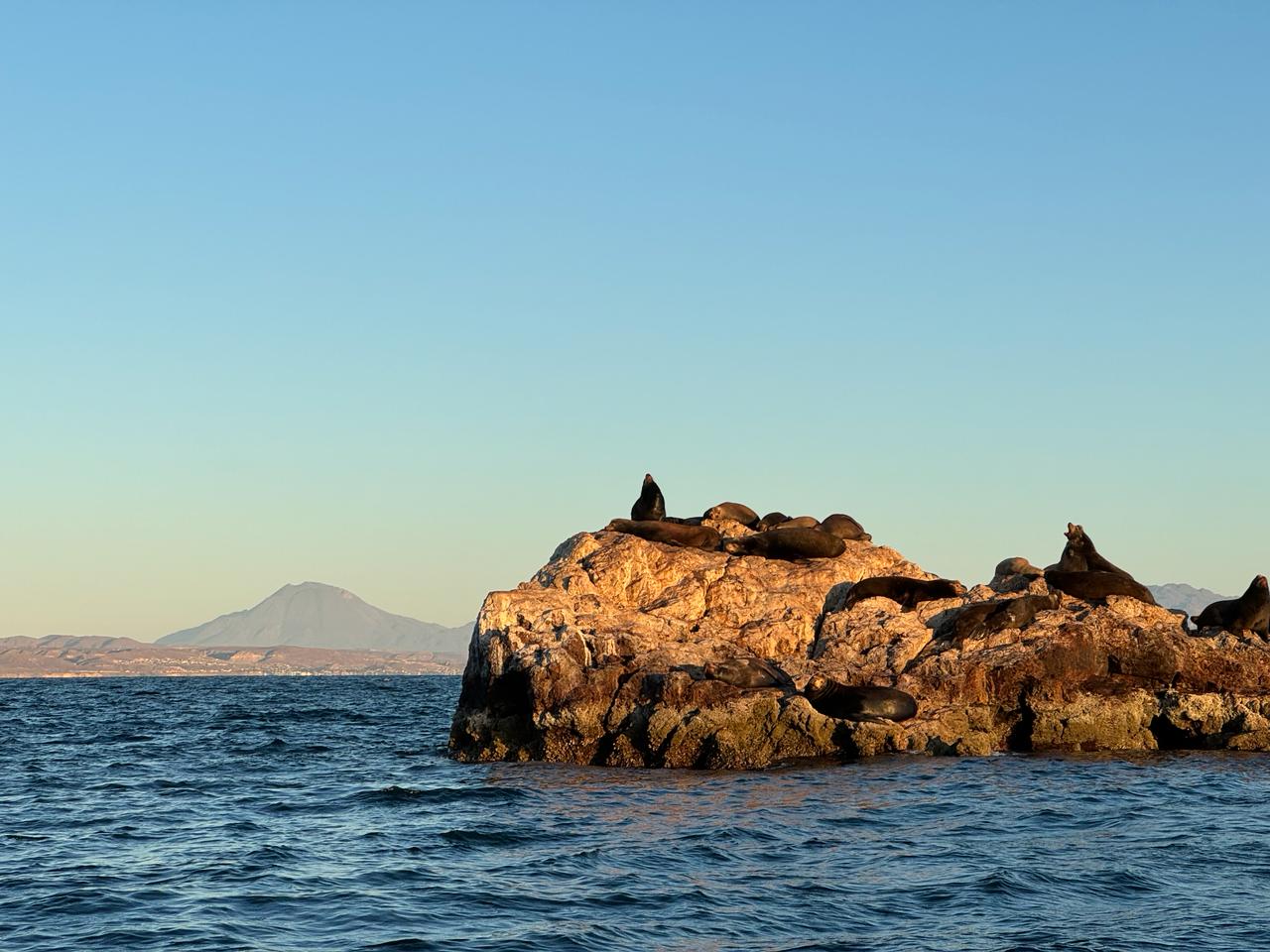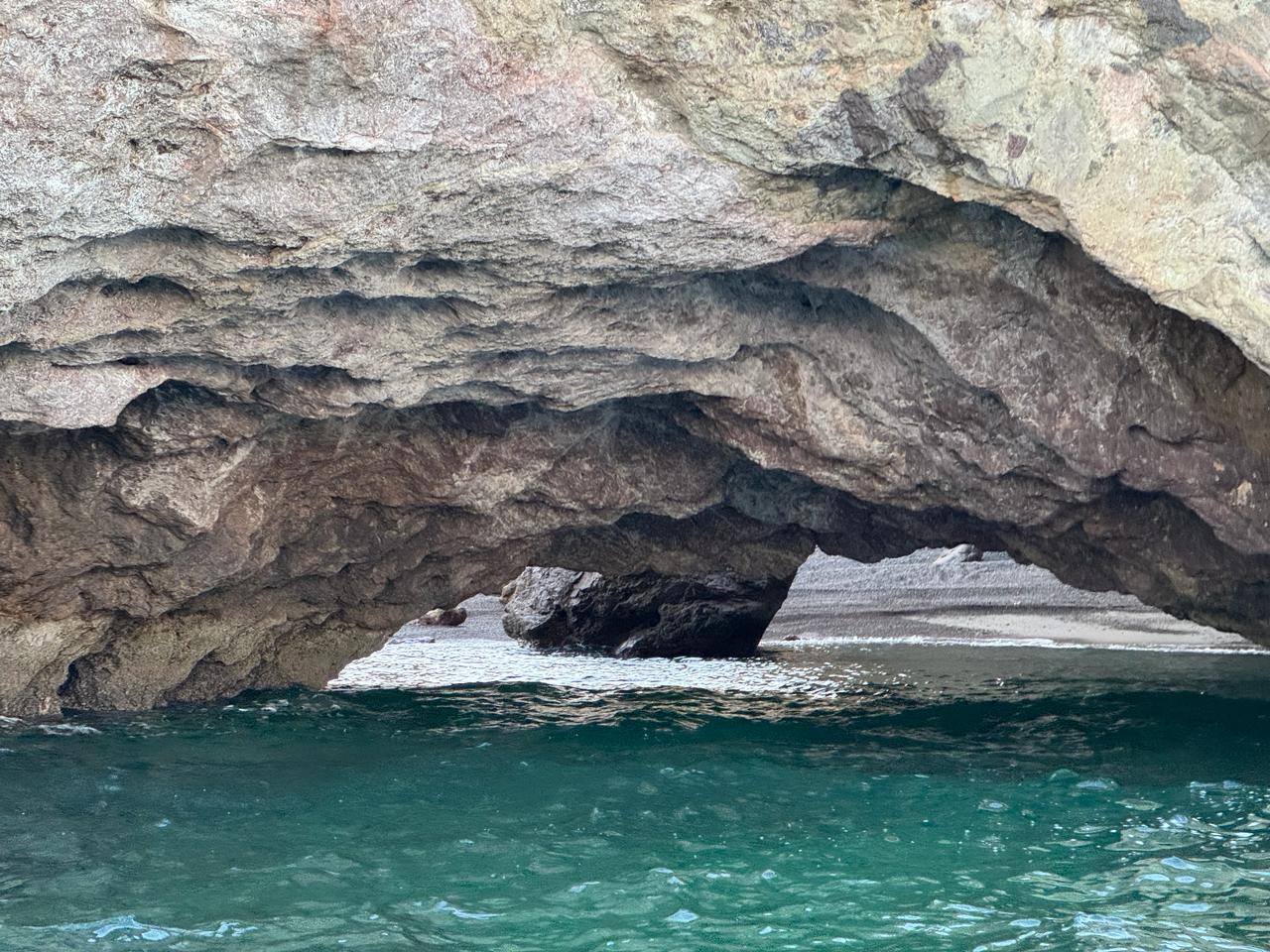Neither the wind nor the distances managed to prevent an encounter with the magnificent giants of Baja California.
Our adventure embarked on April 1st from the port of Loreto, a magical town nestled along the Sea of Cortez on the Baja California Peninsula. Over the course of 15 days, we delved into every island, cove, and bay guided by the whims of winds and currents. Yet, our ultimate quest was to rendezvous with the gray whales before their journey back to the high latitudes. These gentle giants come to reproduce in the lagoons located on the Pacific coast of the peninsula, approximately 600 nautical miles, south and then northwest from Loreto. The wind at this time of year comes from the northwest and did not cooperate with our plans. It blowed at 20 knots, with gusts of 30 knots, and rounding Los Cabos would had been an uncomfortable three-day-voyage by sea, even on our 72.54-meter long Passenger Ship. We had no time to lose, therefore, as soon as guests arrived on board on their first expedition day, we charted a new course northward, venturing further into the Vermilion Sea, also known as the Sea of Cortez. Our destination: the port of Santa Rosalía (27o20’N/112o15’W), a gateway to San Ignacio lagoon (26o48’N/113o11’W), on the Pacific side. In less than two days, we aimed to greet the last of the 2024 season’s gray whales.
This species (Eschrichtius robustus), was hunted almost to extinction, to the point that they no longer exist in the Atlantic ocean, neither on the western Pacific. The only remaining population, from the eastern Pacific, feeds during the summer time in the productive and cold waters of the Bering and Chukchi Seas. Then, to reproduce and give birth, they travel 6000 miles to the three lagoons on the Pacific coast of Baja California, where they stay from January to beginning of April. We could therefore say that most of the gray whales of our planet are Mexican! In addition, Mexico was the first country to protect them since 1940.

As the winds gained strength, anxiety tinged our anticipation. Gusts of 30 knots threatened to seal Santa Rosalia’s narrow harbor. Yet, spurred by determination, we pressed on. We were racing against the elements.
On the morning of April 2nd, we had reached San Marcos Island, across Santa Rosalía. We offered a Zodiac ride at dawn to admire the arches and walls that marine erosion has sculpted in these volcanic rocks, inhabited by California sea lions, blue-footed boobies, cormorants, and pelicans. However, our exploration of San Marcos was shortened because we had to secure the entrance to the port.

Captain Tom’s skill guided us safely into Santa Rosalia’s harbor, just as the Port Authority closed its gates against the gale's fury. Though we remained marooned until April 4th, our spirits soared, for we had achieved our mission. We crossed, by land, to San Ignacio Lagoon! We found the gray whales! We spotted two mothers with their calves and a couple of solitary adults. One of the calves was a “friendly”. It played with our boats for over two hours, approaching as if asking to be petted and pampered. And so we did play with him, or her! The “pangueros” knew exactly how to maneuver while respecting the rules for whale watching. And even though sometimes we moved away from the calf, it insisted on requesting caresses. Why are they friendly? Do they somehow know that we no longer represent a threat? It was a privilege beyond measure.

The gray whale population of the eastern Pacific, after being near extinction in the 1950’s has rebounded to an estimated 19.000 animals. And we were fortunate enough to share precious time with some of them. Neither the wind nor the distances managed to prevent our encounter with the magnificent gray whales. We then continued with our adventure in the Gulf of California, having forged memories to last a lifetime, and having made a gray whale friend.
Article By:
Paula Tagle
Paula is a Naturalist and Expedition Leader, working in the Galapagos Islands, Baja California, the Mediterranean, the Upper Amazon, Cuba, Colombia, Central America, and the Caribbean on board the Lindblad-National Geographic Expeditions. Paula holds a US sailing certification from Annapolis Sailing School, qualifying her to skipper center boats and keelboats up to 40 feet.




